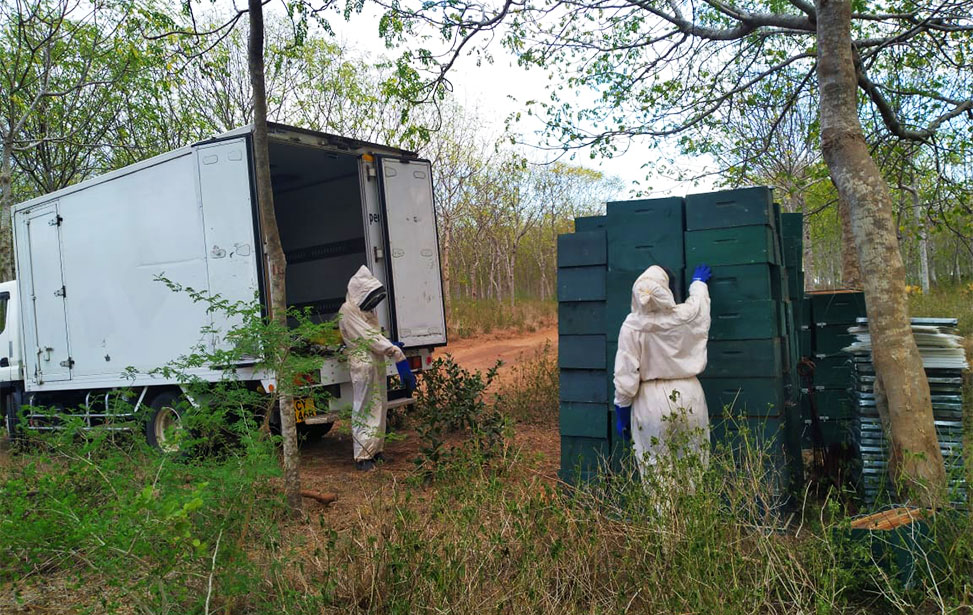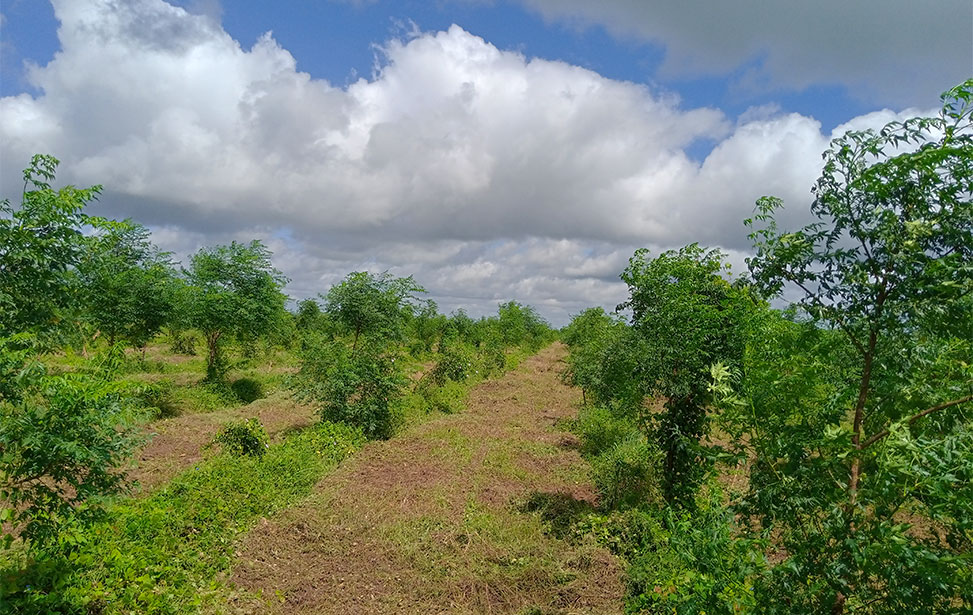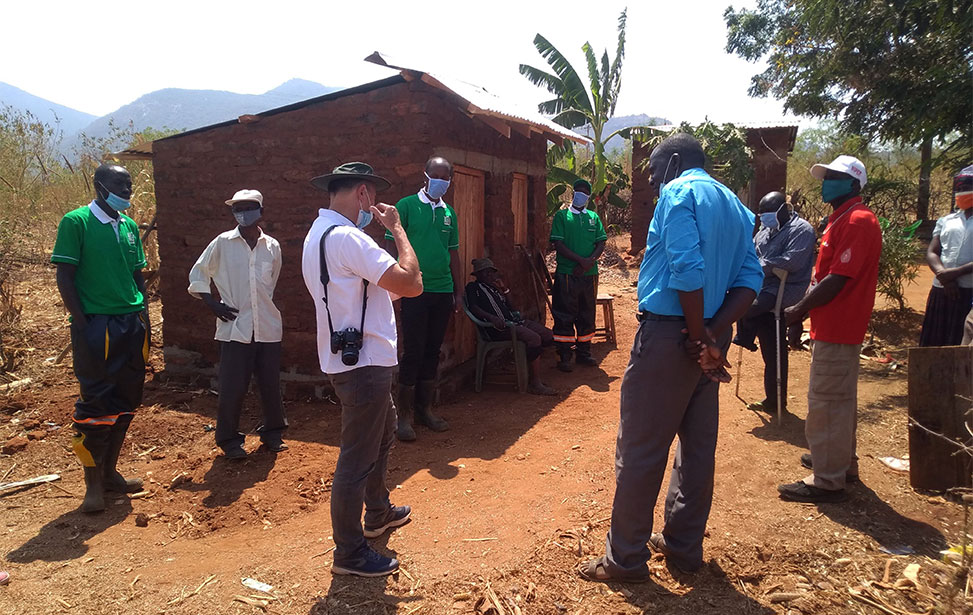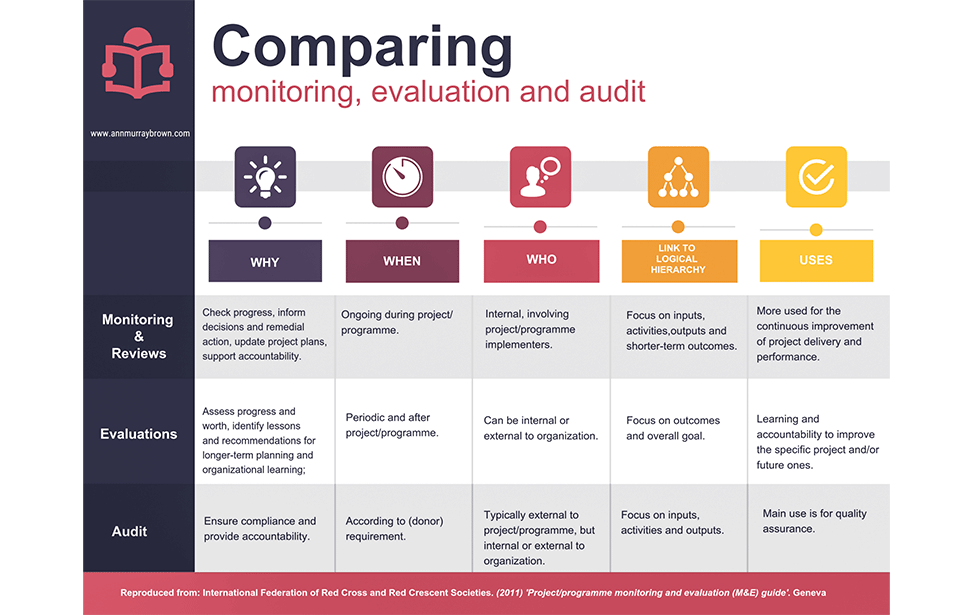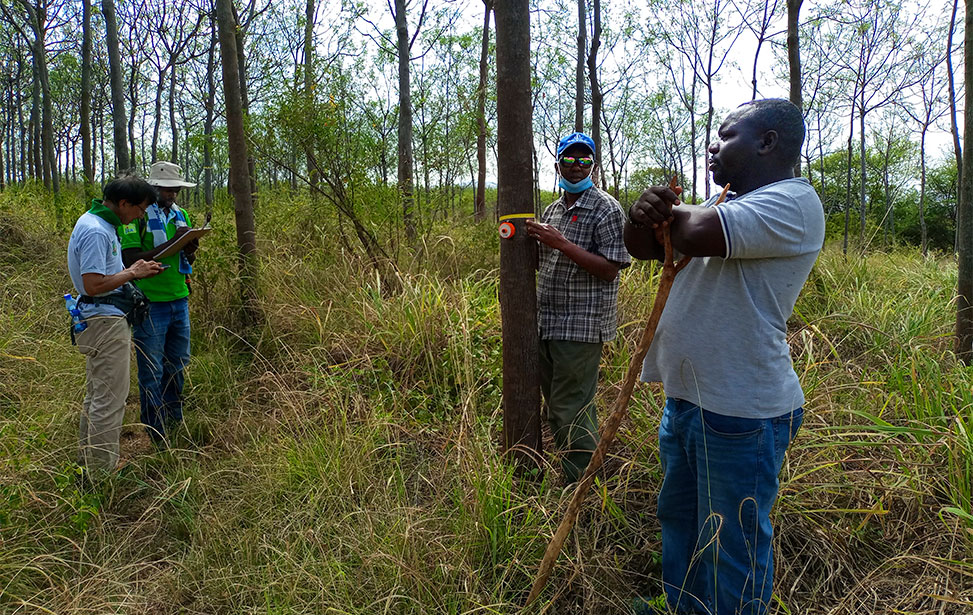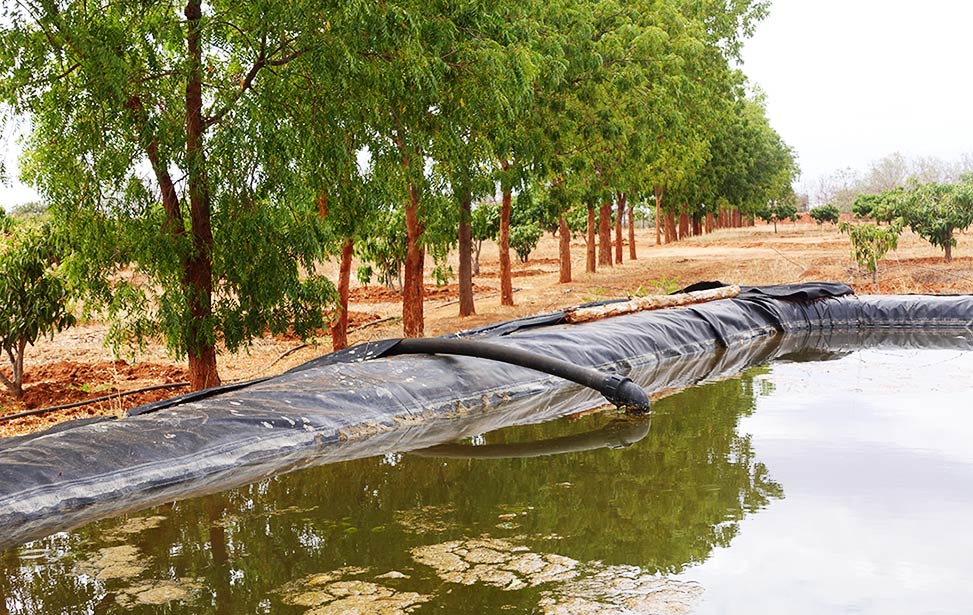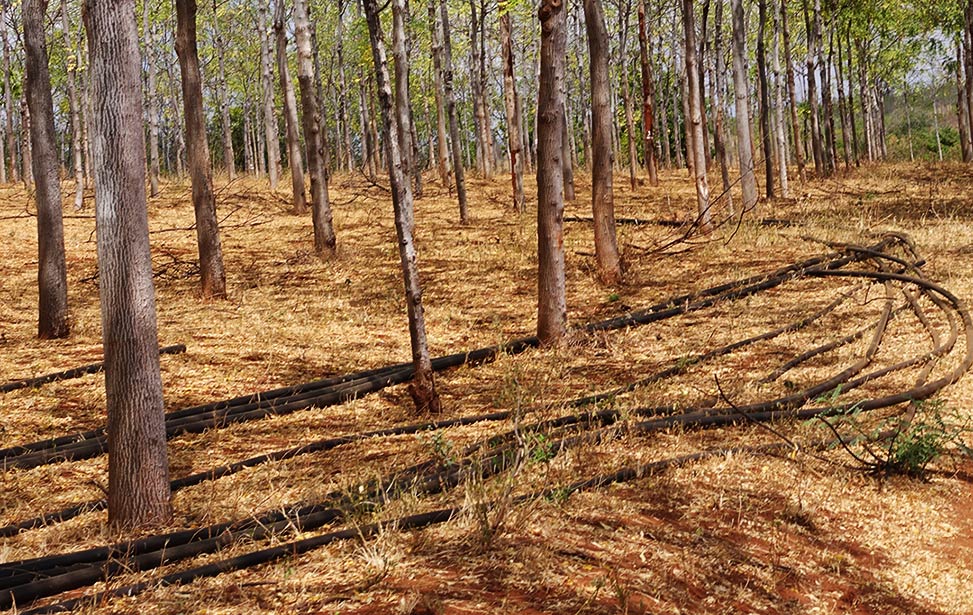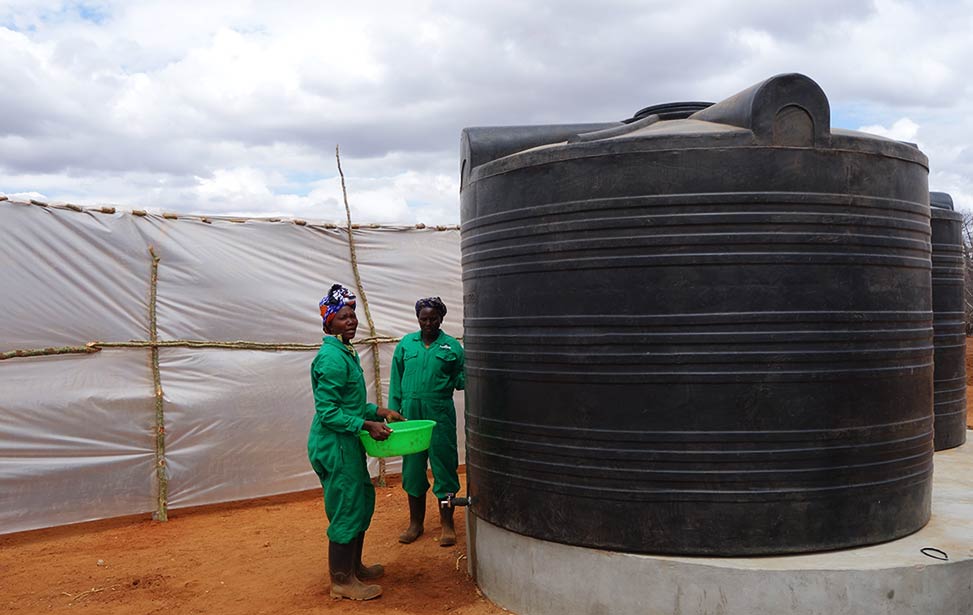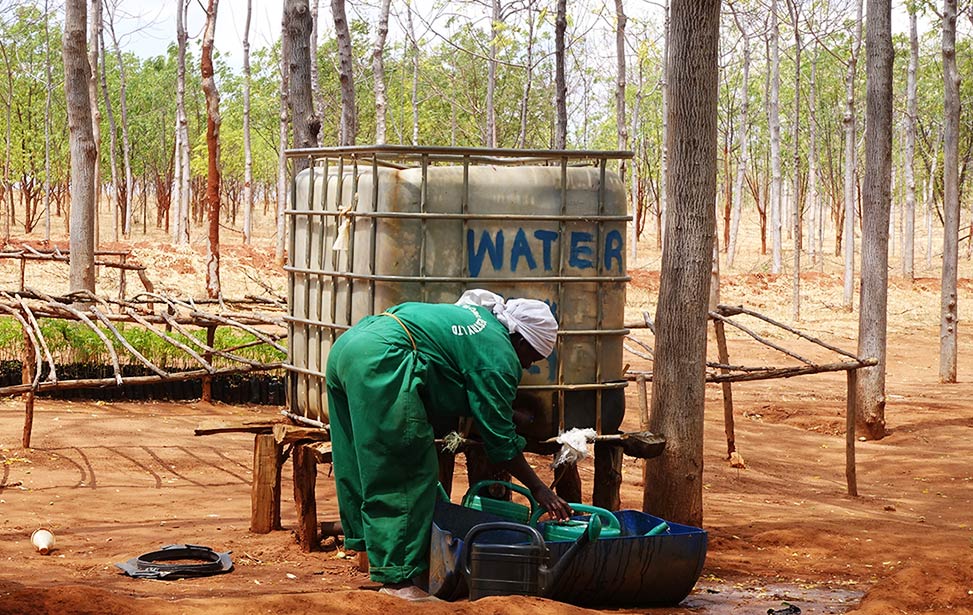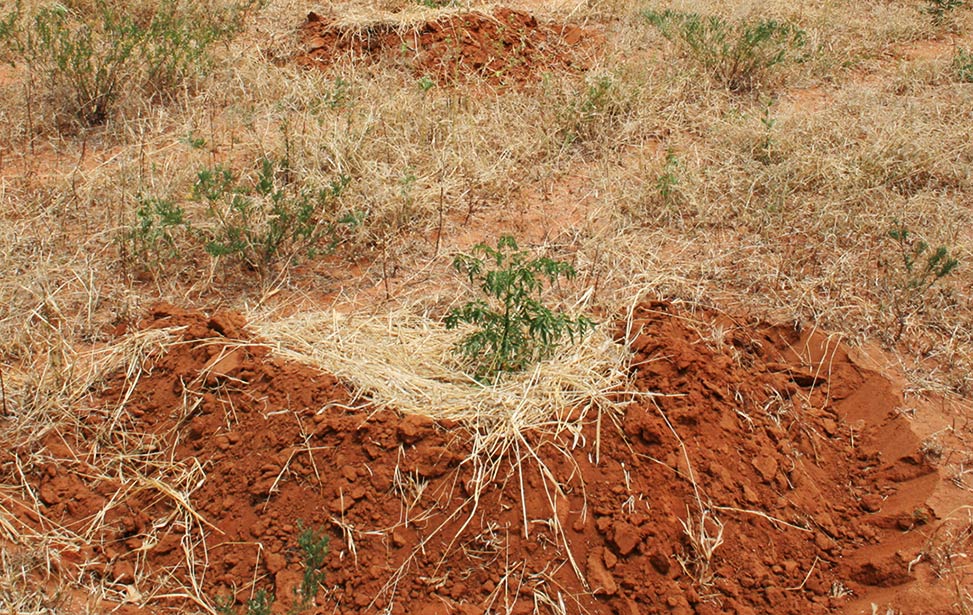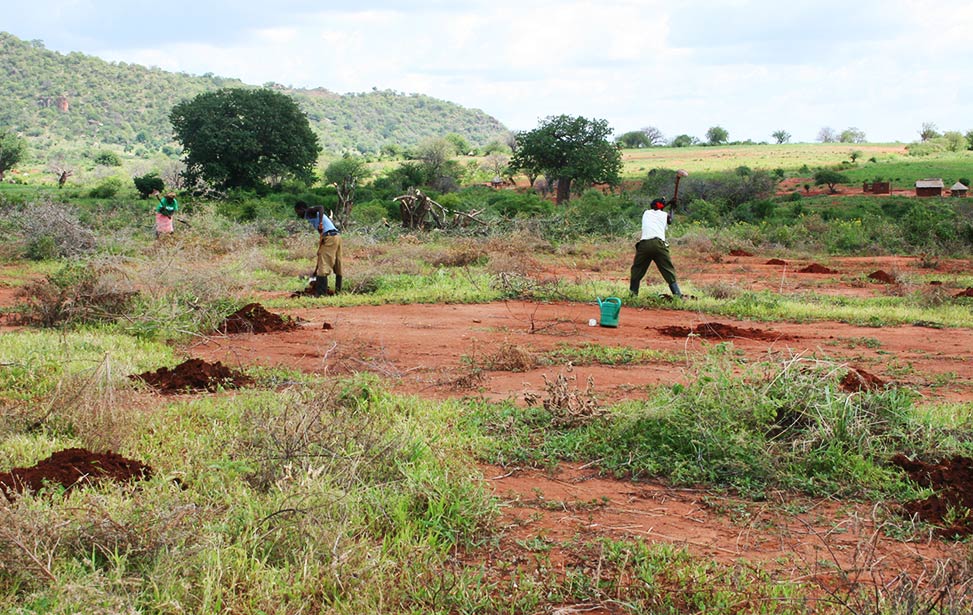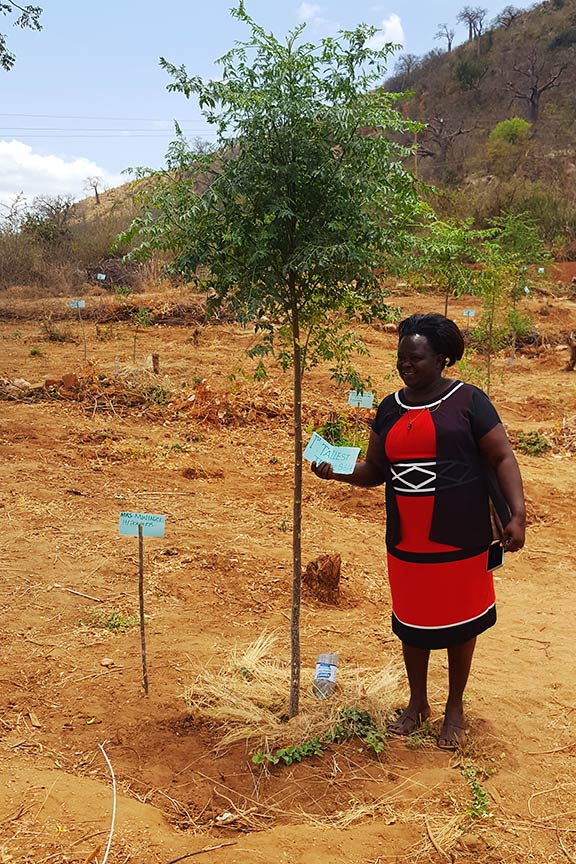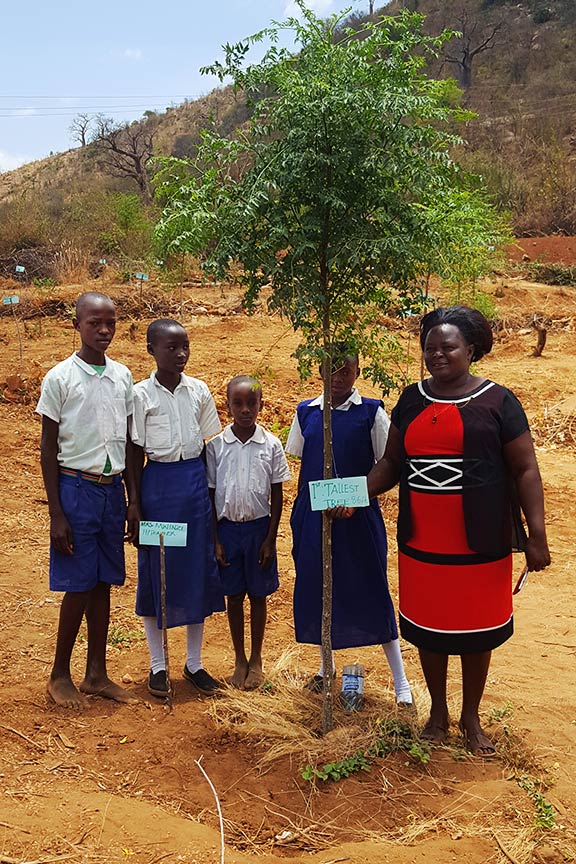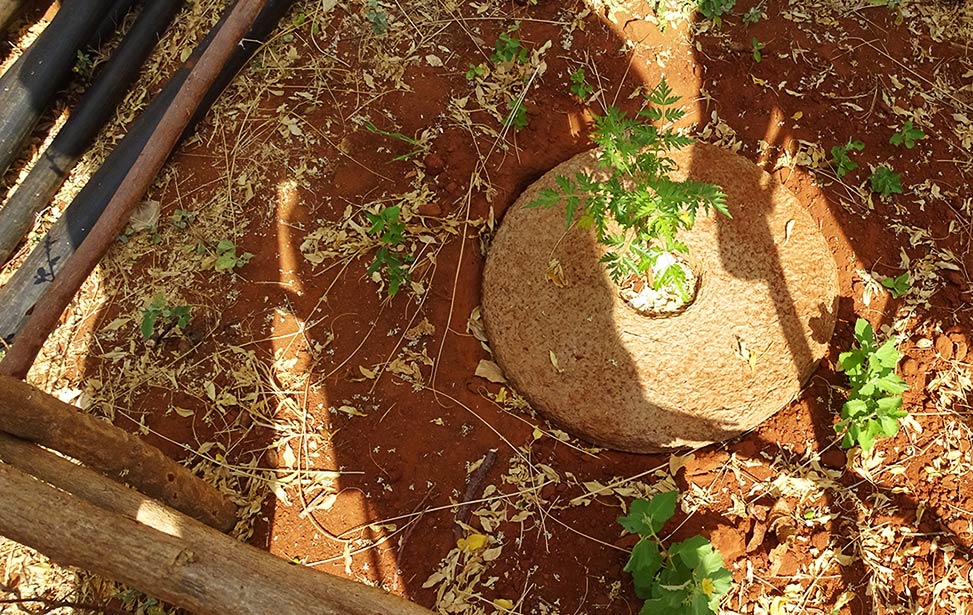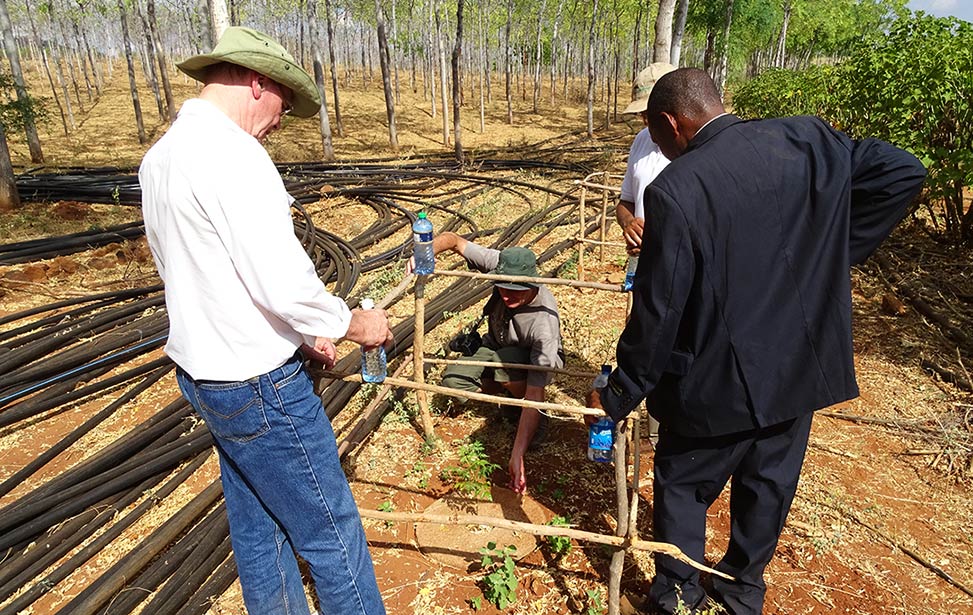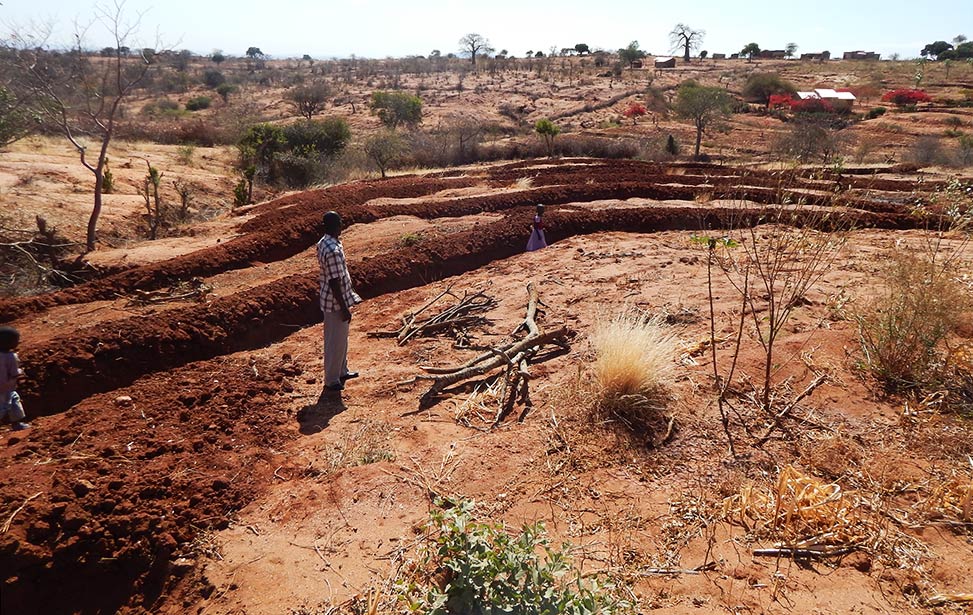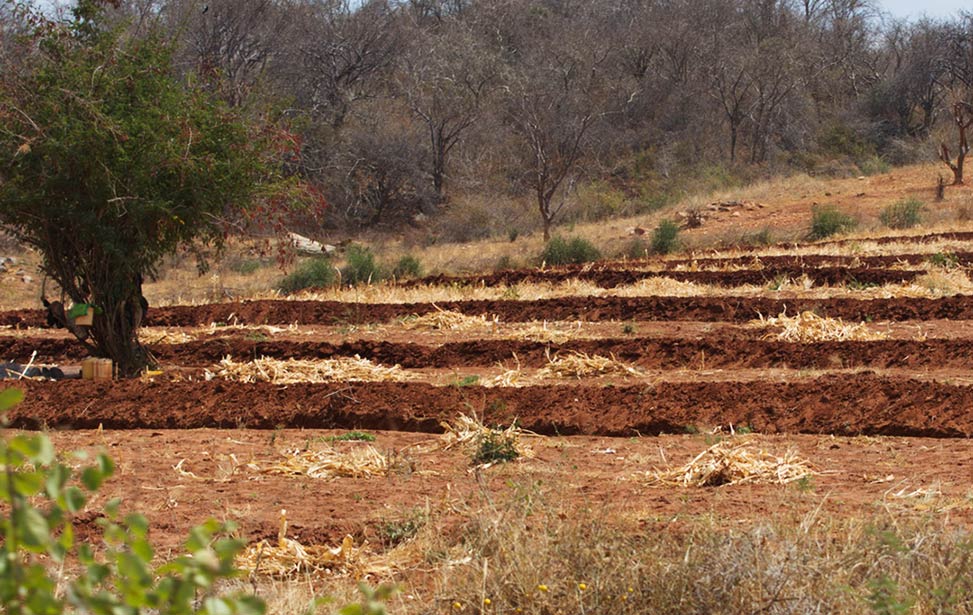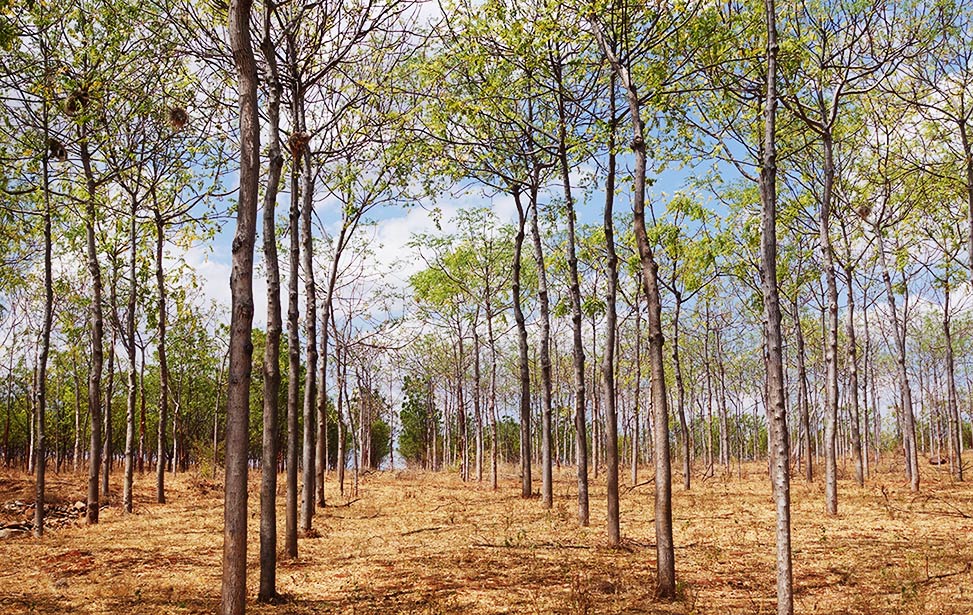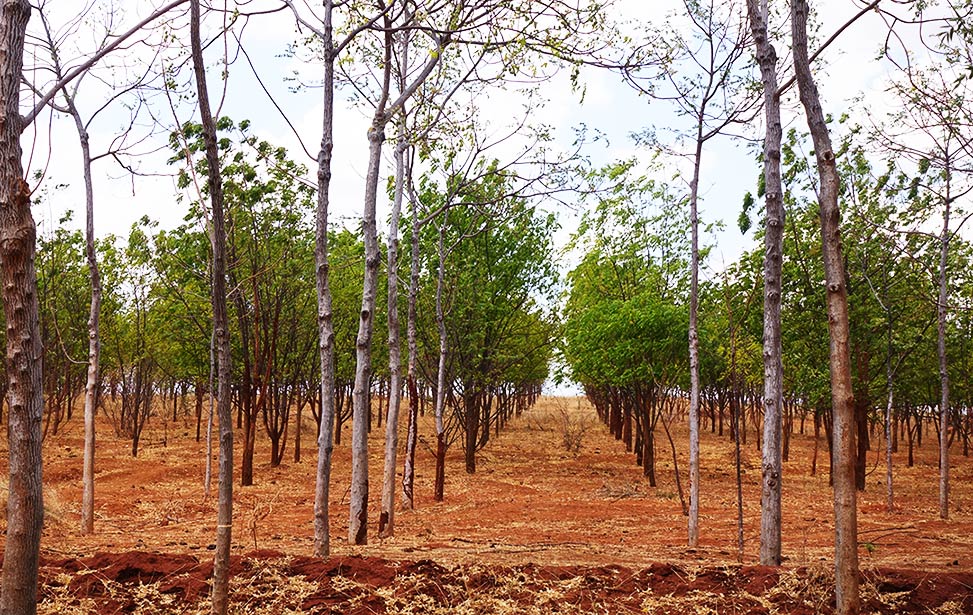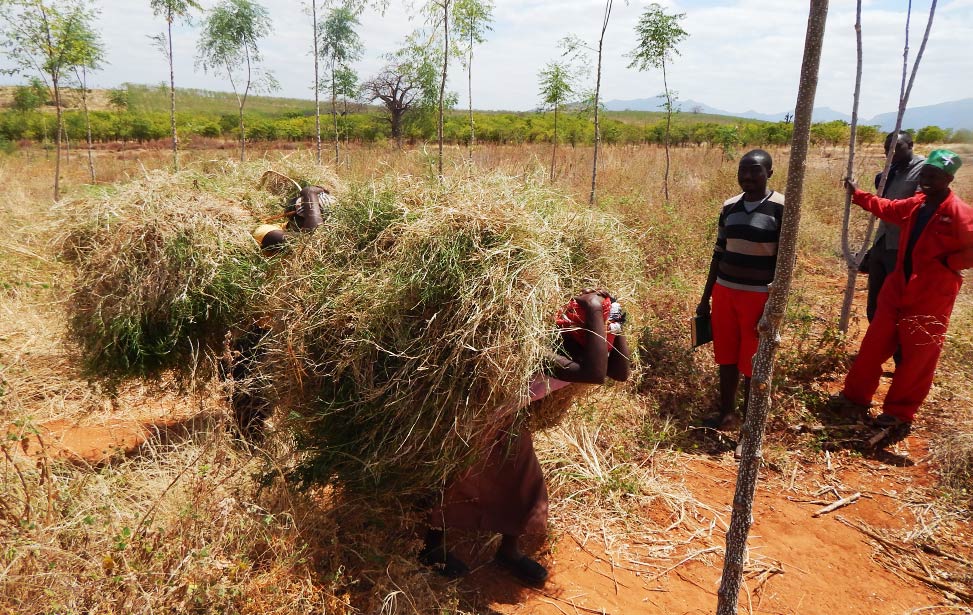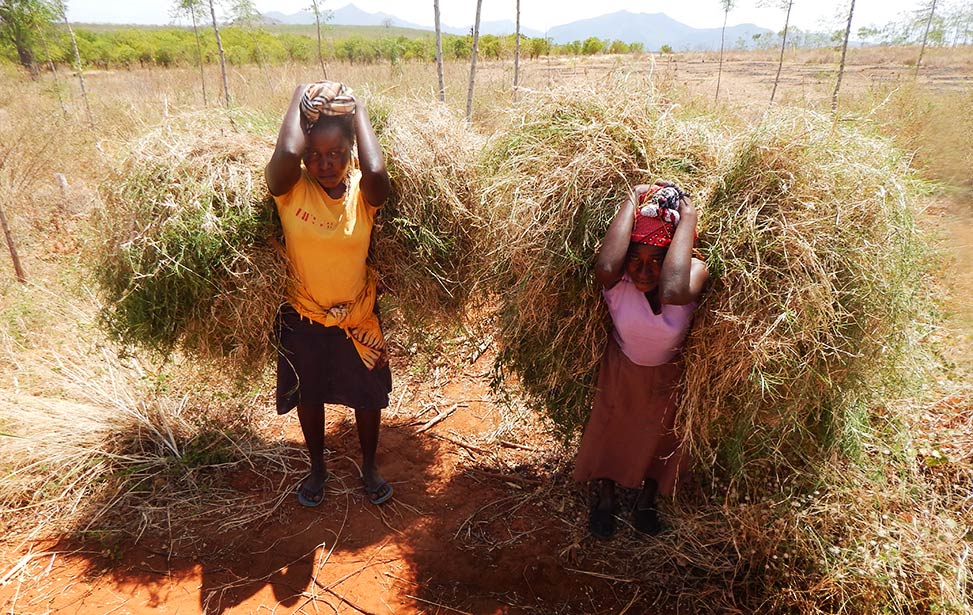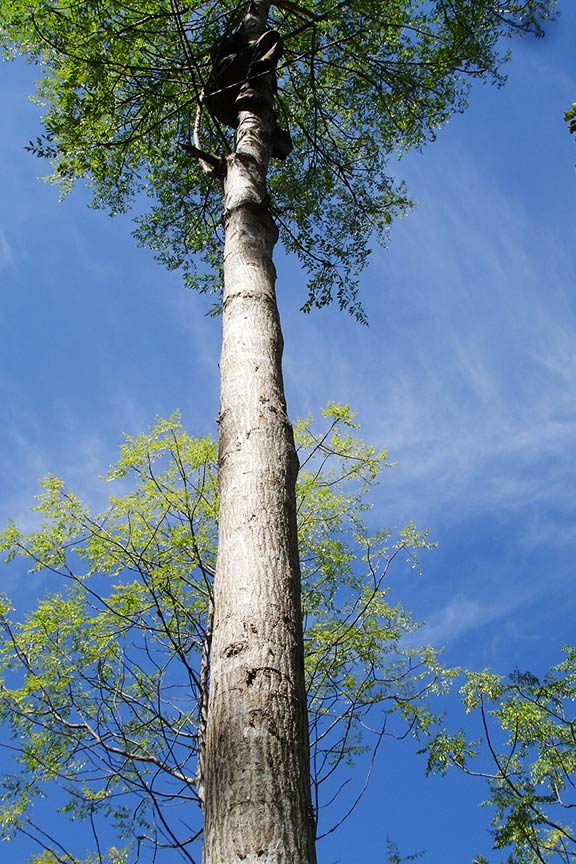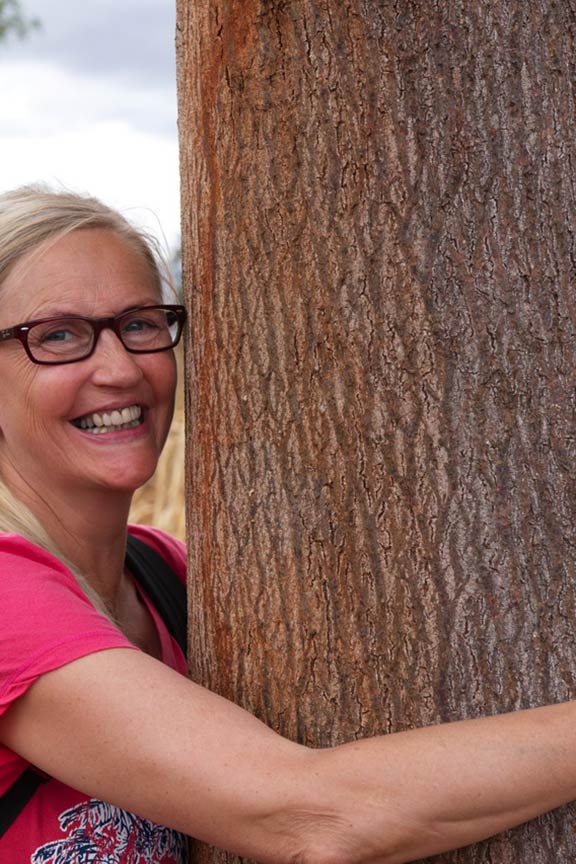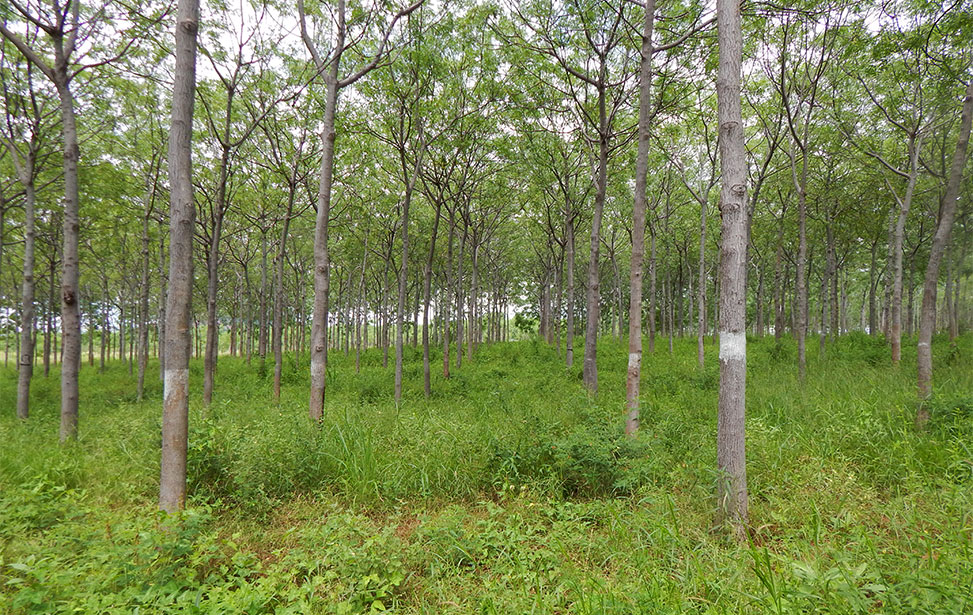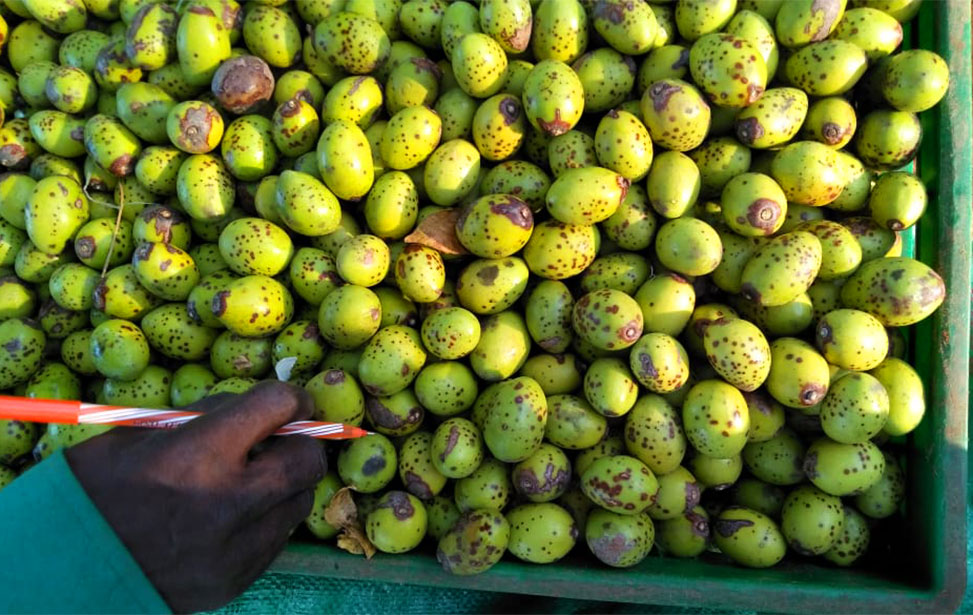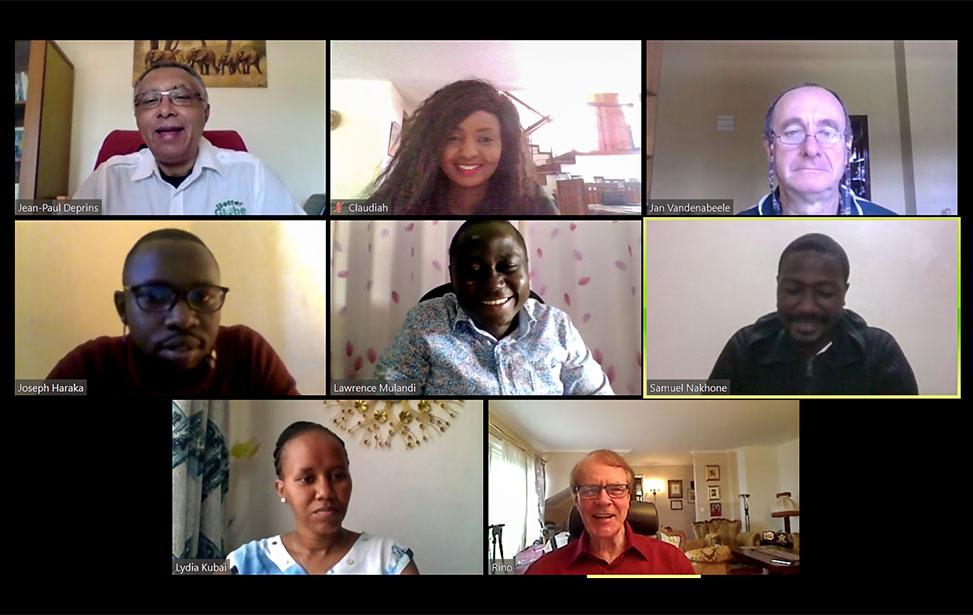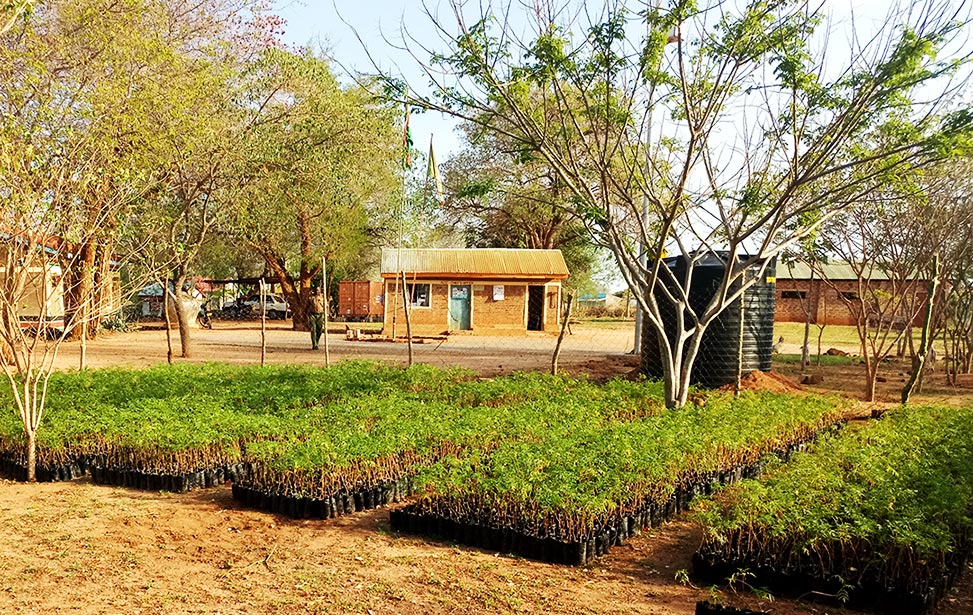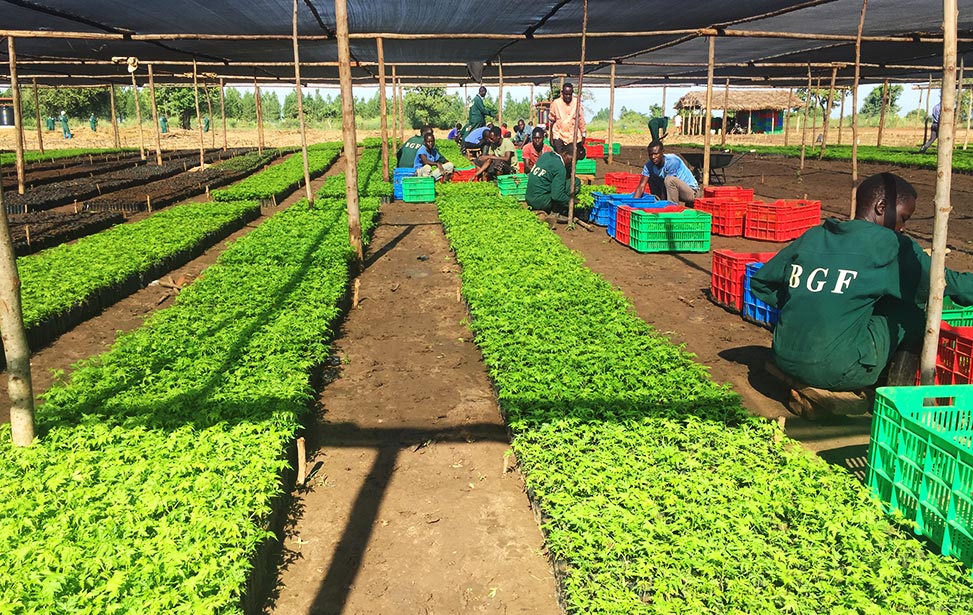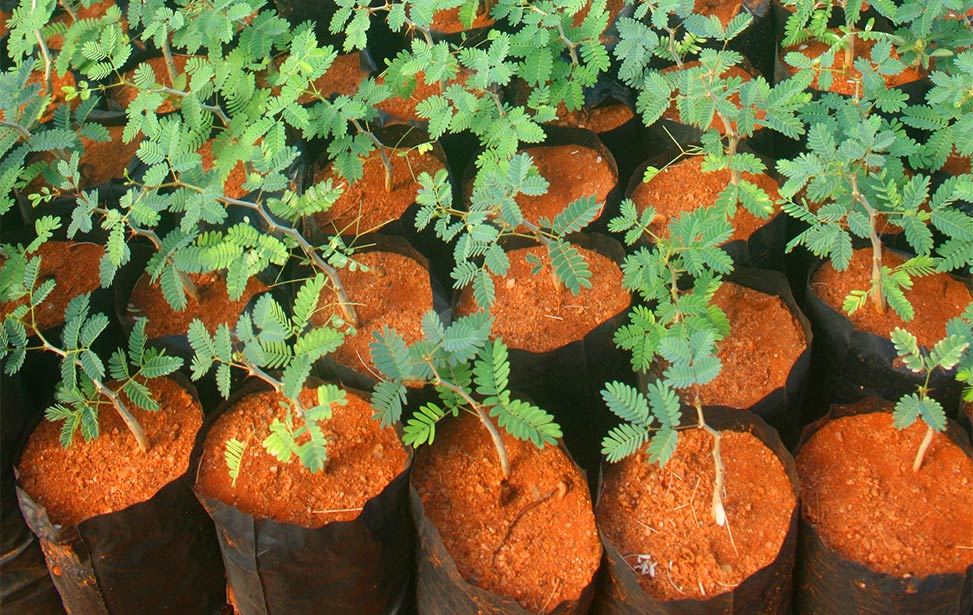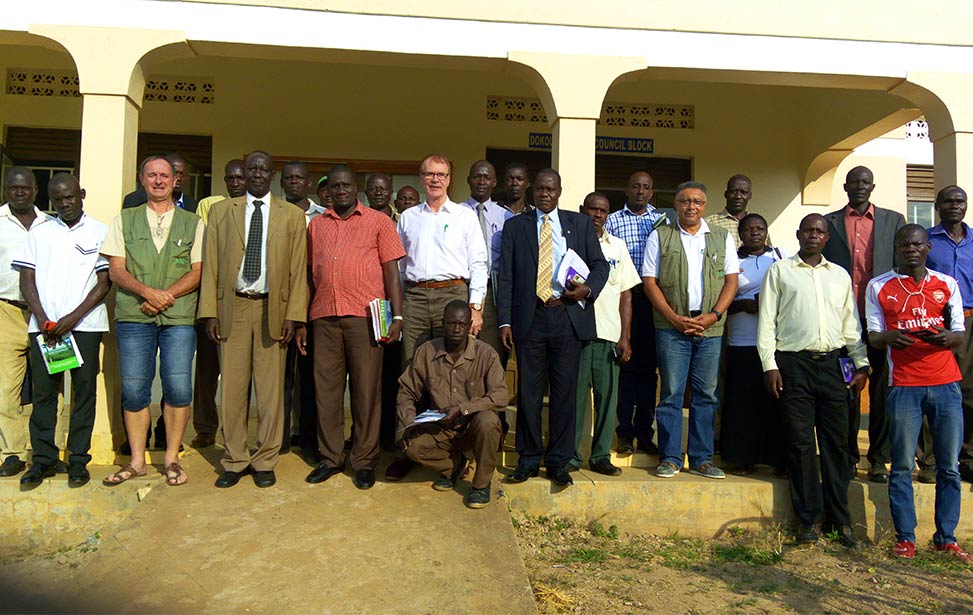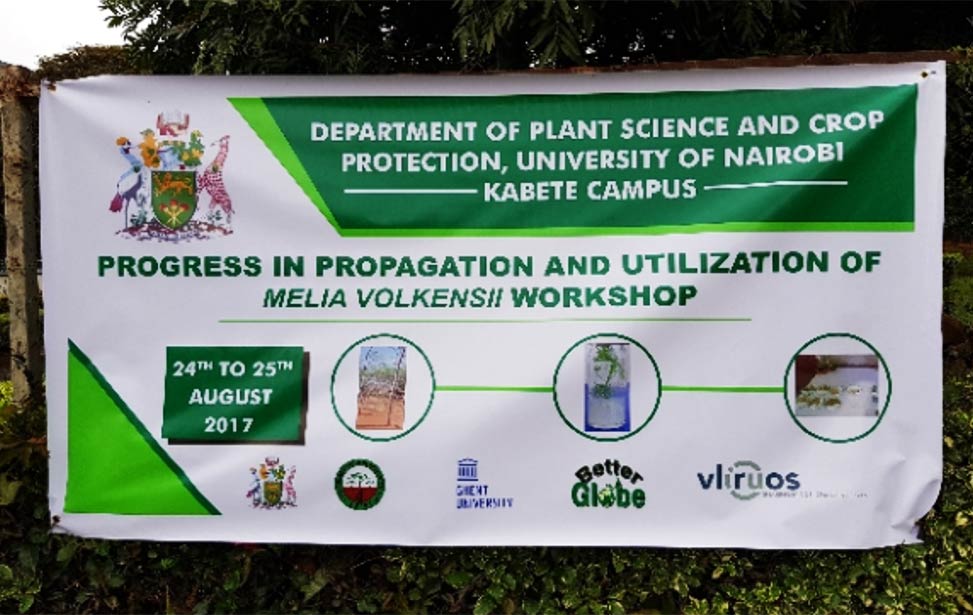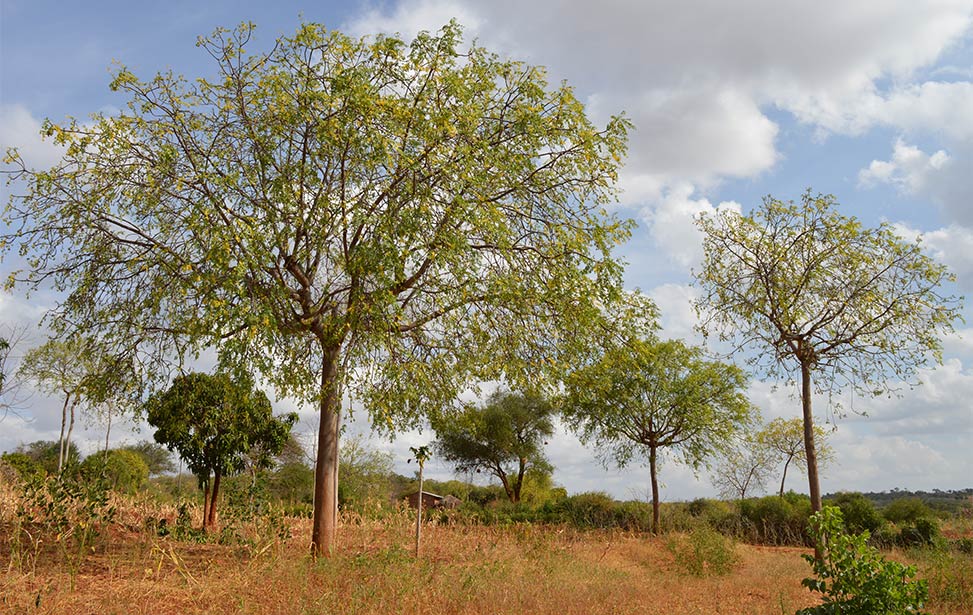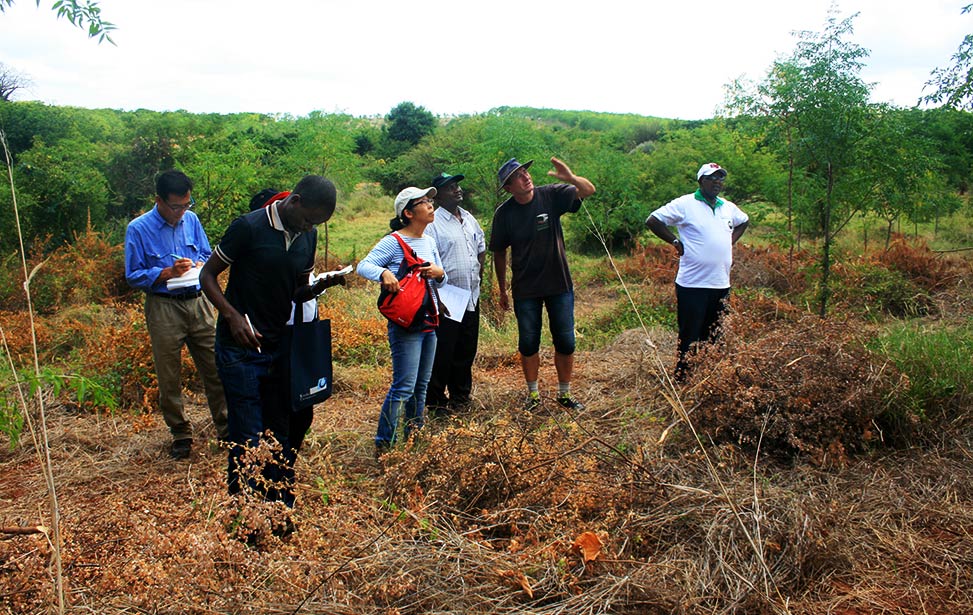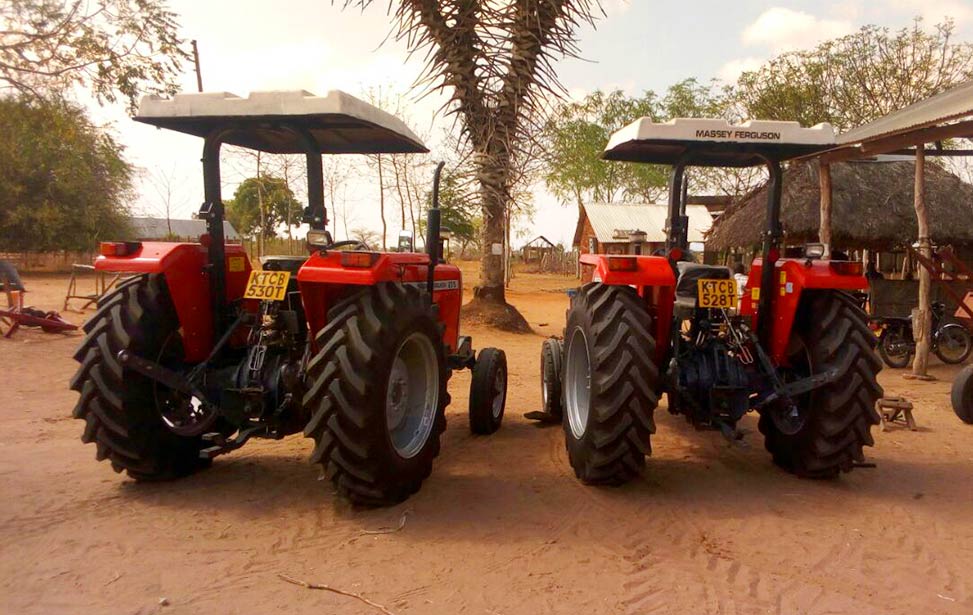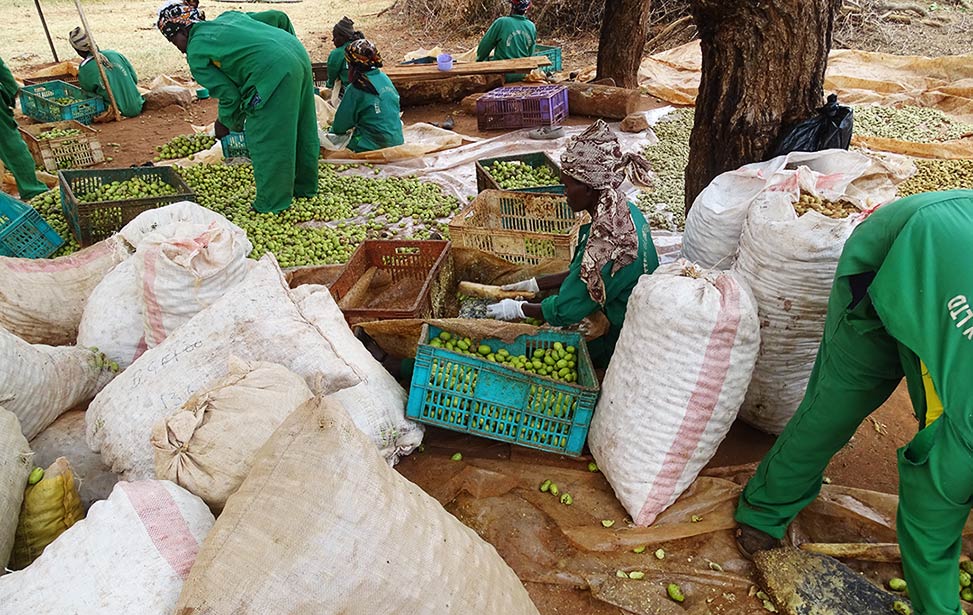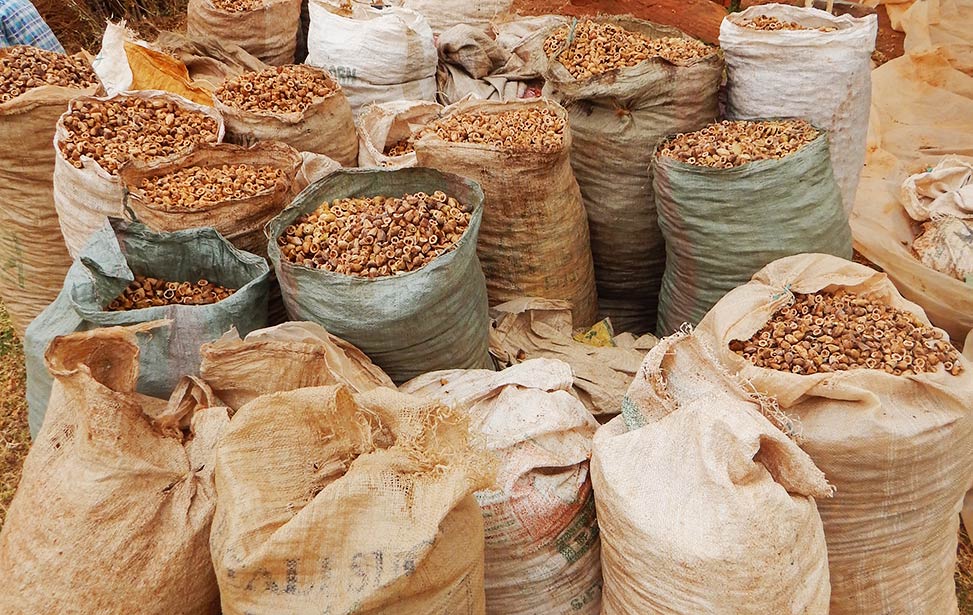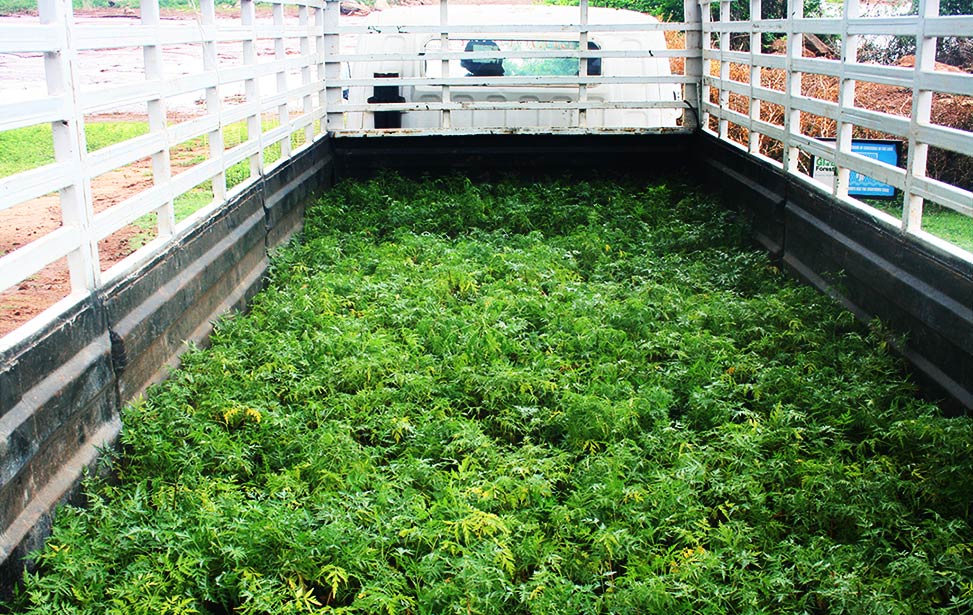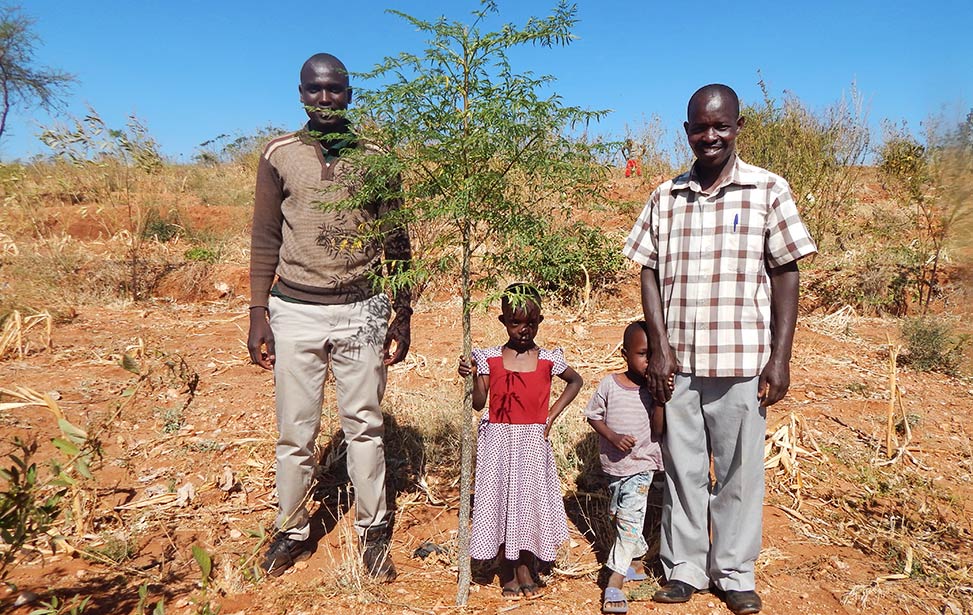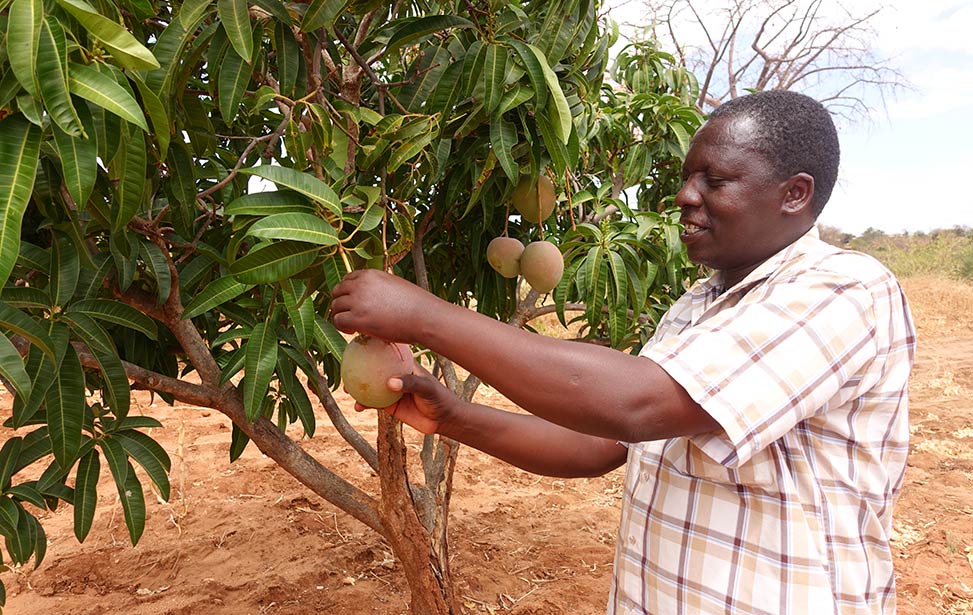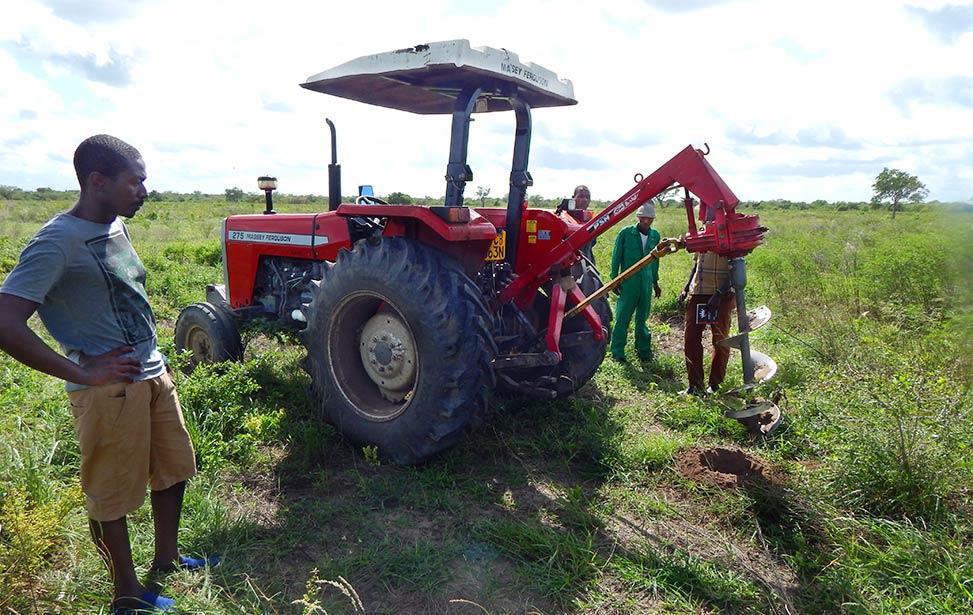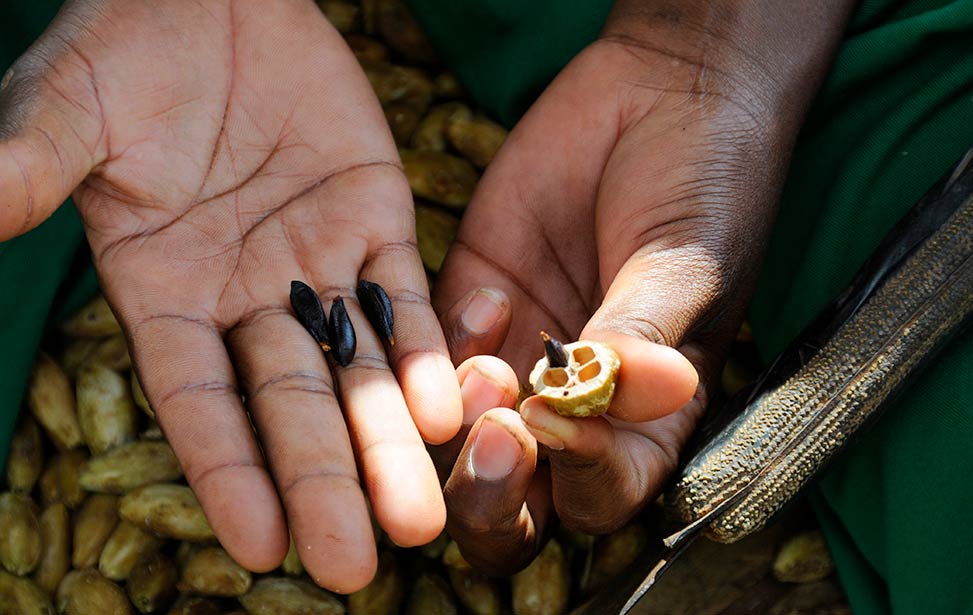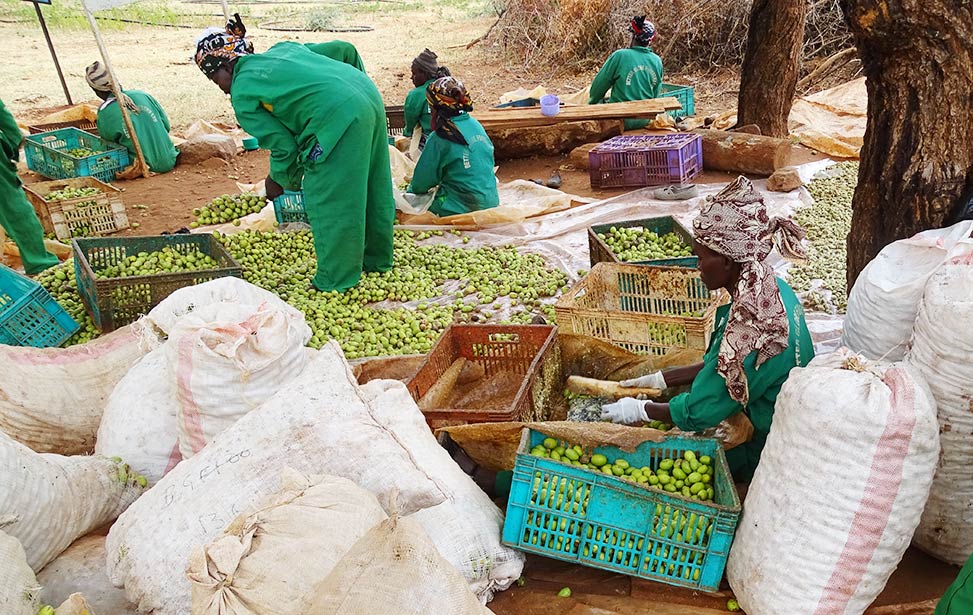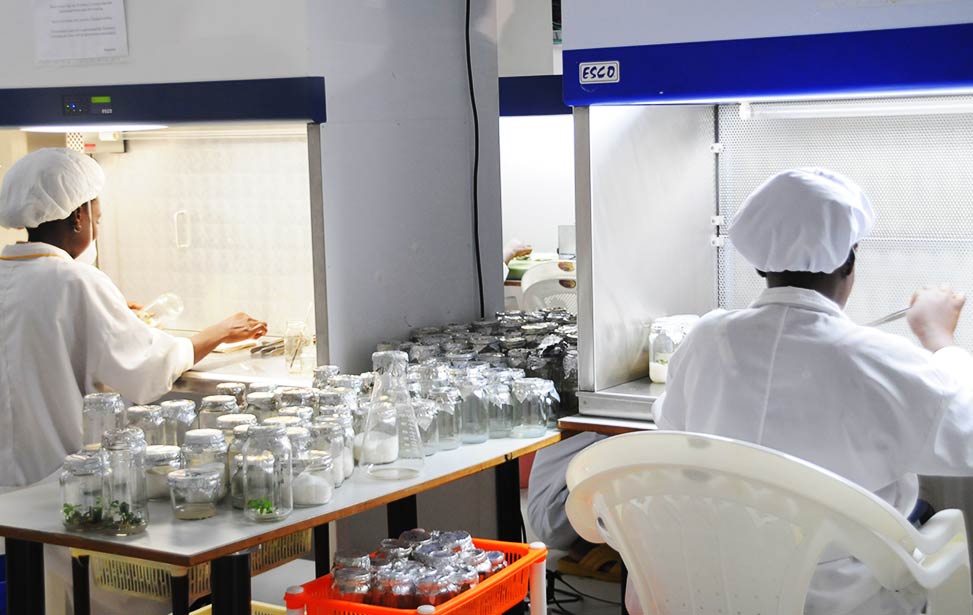
- Jan-Tore Øvrevik
- Jan. 11, 2017
Drip-Irrigation and Mulching of Seedlings
Economic and efficient watering can be done by drip-irrigation. Water basins are filled with water during rainy season and used as drip-irrigation throughout the dry season. In the field, we use our labor force to water each seedling individually. In Nyongoro, we use natural depressions that are deepened with the bulldozer to create water reservoirs, which are filled with water during the rainy season and act in the same capacity as the water basins.
The seedlings must also be mulched to protect the underlying soil from drying and heating up. This way, the young root system will be protected. Generally, the mulching is done with dry grass or weeds which needs to be repeated every three months, because termites consume the mulch. The mulching diminishes the heat of the soil by about 2 Celsius degrees. The use of half-moons around the trees are to retain water. When the trees are young, we water them once a week.
In the pictures below, we see Mrs. Ivuli, head teacher of Thua Primary School in Kitui County, and some students with their trees. This is part of our tree donation program for schools in cooperation with the Green Initiative Challenge. Each child is responsible for their own tree and has their name on it. Note the grass around the young tree and the half-moon shape on the ground that is made for the water to retain. These are simple but effective methods to increase the survival skills for the tree seedling during its first year.
There are different techniques for retaining water. Below is an experiment we did with water box. The experiment was not conclusive.
Other common techniques to retain water is to dig ditches in a terrain where the water flows downhill and causes erosion and damage to crops and seedlings. Here is one of our contract farmers who uses ditches to retain the water and to avoid flooding during rainy season. The soil will have moisture for the trees for a long time and the water filled ditches will work more like a drip irrigation system.
The final objective is to produce logs for timber, out of stems that have a diameter of over 40 centimeters (16") and a clean bole (without branches) of 5 meters (16 ft). Several operations are important here: planting, spacing, protection/weeding, pruning and thinning.
Spacing
This is the distance between the pits. Mukau needs full sunlight for its development. The minimum spacing should be 4 meters (13 ft), although complete agroforestry practices require a spacing of 7 to 10 meters (23-33 ft). Initial growth is fast and soon the branches of neighboring trees start competing with each other, and then the growth slows down. At a spacing of 4 meters, this competition sets in after 4 to 5 years and thinning is needed.
Protection/Weeding
Weeding is essential for survival and fast initial growth. Grasses and herbs can kill the seedlings. Apart from that, the weeds compete for the same scarce moisture that the roots of the seedlings need.
Because of drought, villagers have problems getting enough grass for their livestock, while we have enough grass and weeds we want to get rid of. This works perfectly for both the villagers and Better Globe Forestry. We organize locals so they can cut grass between our trees and we have had up to 200 people at the same time cutting grass for their livestock. This is also part of our CSR (Corporate Social Responsibility) to make good contact with our neighbors. We allow some schools that have cattle to grass around our older trees (as well as our own donkeys), which cannot be damaged by animals compare to our seedlings or young trees.
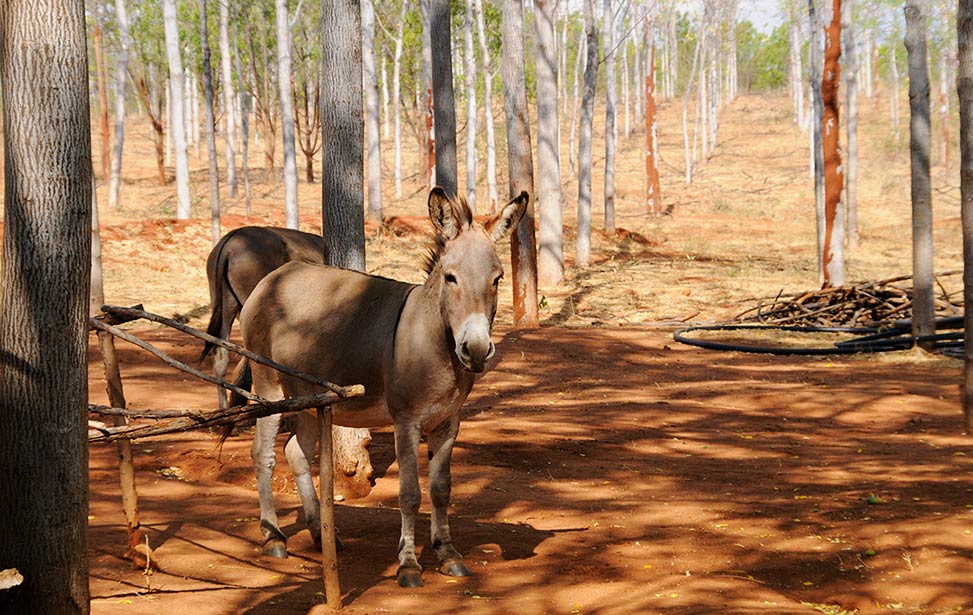
Pruning of Trees
The objective of pruning is to obtain a clean bole of up to 5 meters (16 ft) height, with all pruning scars confined to a central cylinder within this bole of a maximum of 10 centimeters (4 inches) in diameter. This can be achieved through a regular pruning schedule of about 10 prunings during the first four years of growth. In this way, first rate timber clean of knots can be produced. It is a delicate operation. The tools and timing are important. For tools, secateurs and pruning saws are recommended, later in combination with ladders.
During the first months after planting, farmers traditionally pinch off buds and cut off small branches so that they can see a stem emerging and not a bush. Thus, the young tree often becomes top-heavy, and bends over even under a moderate gust of wind, as its stem is not thick and strong enough. Therefore, we recommend almost no pruning during the first five to six months, up to a height of 1.5 – 2 meters (5 - 6.5 ft).
Even afterwards, only light pruning should be done to encourage the formation of a sturdy thick stem. This light pruning should be selective, meaning only thick branches (over 1 inch) and double leaders should be cut off, while smaller branches can stay to provide more photosynthesis or growing power.
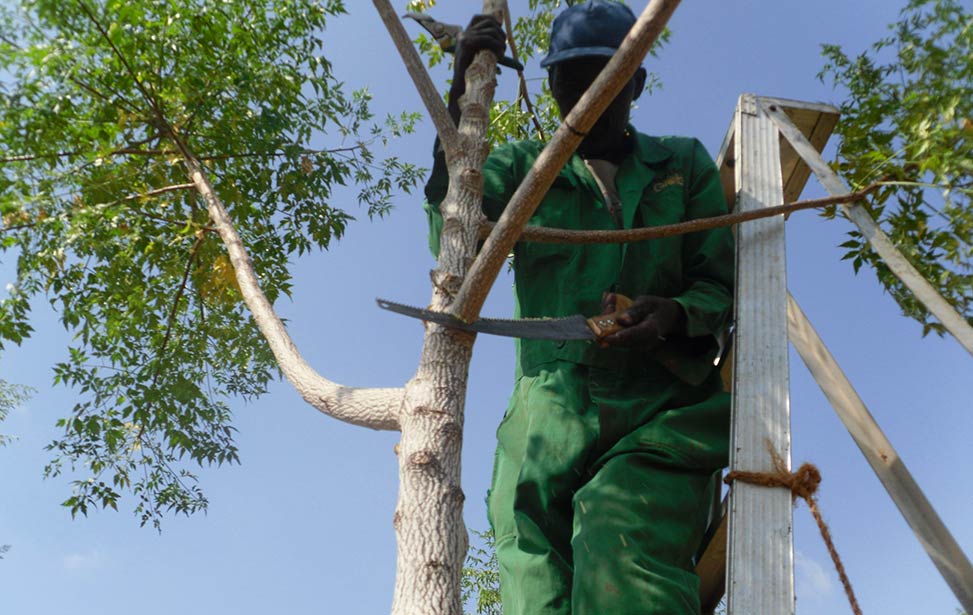
Thinning
The objective of thinning is to cut small and bad looking trees, providing the better ones with enough space to grow. This is an operation that starts after five years if the trees were planted at a spacing of 4 by 4 meters (13x13 ft). It is repeated once or twice in the following years, always when the branches of neighboring trees start touching and competing for space.
Final product
Mukau trees can grow over 15 meters (50 ft) high. Some rare trees show stem diameters of up to 50 centimeters (20"). It can attain those dimensions by 20 years of age. This final product in all its beauty is a high-quality mahogany tree that is excellent for use in furniture, flooring, interior paneling etc. Our customers who patiently waited for the profit from the trees can finally harvest their green gold. The trees that are cut will be replaced by new seedlings that will grow and keep the land green and protected.

